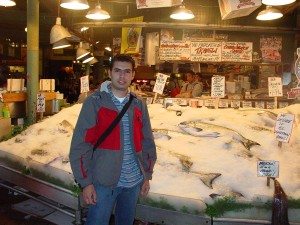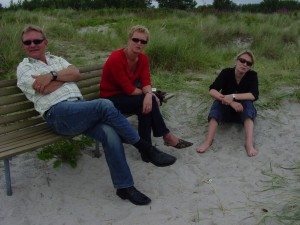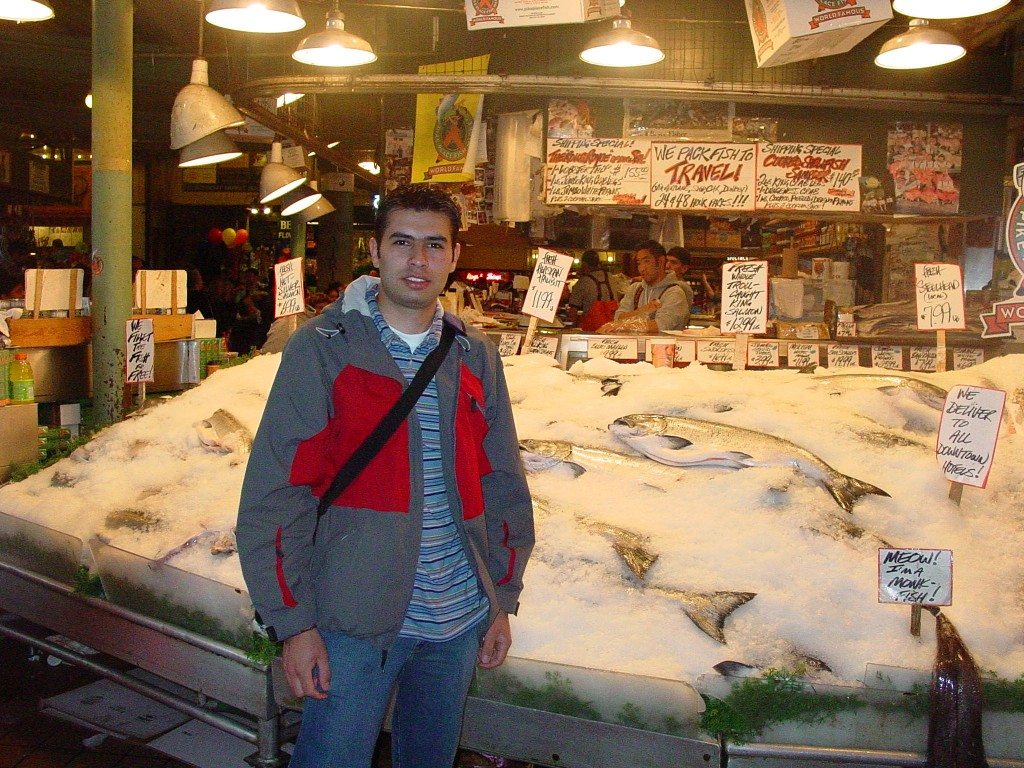
….Continued.
Eva wasn’t our first in-home travel experience. A few years ago, we hosted a 21-year-old boy from Columbia. He arrived in the middle of the night, looking very foreign, and clutching a bag of fast food take-out. “Oh boy” I thought. “What have we gotten ourselves into?” We had to communicate by writing everything down for the first few days but we were able to communicate better by the second week. His mother ran a restaurant so he made us a few absolutely delicious Columbian meals.

Breakfast? Scrambled eggs with shavings of ham and peppers accompanied by rich hot chocolate. There is no way we could have eaten better had we been sitting in downtown Tunja. I would catch him teaching the girls Spanish on the bench outside the front door where they wouldn’t be too embarrassed and their Spanish grew almost as fast as his English. My best memories are of Sunday mornings, drinking coffee, and sharing philosophies about religion, marriage, and life in general. It was especially interesting to watch his reaction to our non-traditional division of labor. Bill showed him how to do the laundry not me! We miss him too and, happily, we’re still in touch.

How long might your international family last? Well, a lot longer than any trip I’d want to take. I lived with a Danish family in 1986. Thanks to holiday cards, a few visits, and the Internet, we’re still in regular contact. In fact, I still refer to them as “my Danish parents.” Why would I stop? I learned so much from them. They each worked 30 hrs per week and took equal care of their daughter. Living in suburban Boston in the 1970s and early 80s, I hadn’t really experienced non-traditional family arrangements. I even brought my own biological family to visit my Danish parents a few years ago. It wasn’t quite like a trip to visit their Grandparents but it wasn’t so far off. Check out our photo – we even look alike!

Could I have experienced the same Denmark from a hotel, or dorm room, or even another family. Absolutely not! I think they’ve hosted over a dozen students, teaching us all how to make Danish lunches and red paper Christmas stars. As well, as how to have a hyggelig evening with friends.
There are a few downsides to be honest about. Just as you have to get used to people doing things in new ways when you are “on the loose.” You have to get used to guests doing things in new ways right under your own roof. Maybe they don’t load the dishwasher the way you would like them too? Maybe the bathroom is filthy or they’re on the Internet late at night? Having a relative stranger in your home is not a small thing. But set boundaries, be honest, and don’t extend every option until you know them. For example, it’s probably a good idea to hang onto your car keys and not offer your bank card password eh? Don’t expect childcare until you trust them watching your kids. It’s also a good idea to have an escape route. Make sure you have an option for terminating the homestay if the fit is bad or unsafe.
And what does it cost? Some programs reimburse the host family for meals and incidentals. The programs we’ve participated in do not. However, when Jacobo stayed with us, our food bill actually went down for three months because we weren’t tempted to go to restaurants as frequently. Road trips cost a bit more and you might also want to “invest” in an extra ticket to a performance. But, there are so many free options in most places that you can enrich your life and your guest’s experience in so many inexpensive ways that it really isn’t necessary to spend a lot of extra money. Remember that many of the most important things you can offer as a host family are the everyday experiences that might seem mundane. Grocery shopping, visiting a friend’s house for dinner, browsing a craft fair, hiking in the woods, or watching a university sports game. These are difficult experiences to find as a tourist and a big part of what differentiates “living” in another country from “visiting” another country.
Still interested? A good place to start is with a short home stay and/or someone you know. Know an international family with a teenage son? Invite him to come visit for a few weeks next summer. Register him for a cool summer camp and plan a fun weekend getaway. Arrange a structure for English lessons and you’re off on a “trip” that’s cost effective and educational. For other options, you might check out the local university or college. They often have programs to welcome international students. The University of Washington boasts FIUTS (Foundation for International Understanding Through Students). They host culture nights and even offer a “Friendship Connection” in which your family befriends an international student without actually housing them. Maybe you take them out to dinner, help them find lodging, explain your culture, participate in a language exchange …. “FIUTS believes that our world is richer and more peaceful when people have opportunities to share experiences and build friendships that extend beyond borders, politics, and stereotypes.” We’ve hosted a student from Japan for a week through FIUTS. We took her to sleep in a teepee and helped her search for a suitable apartment. When she got engaged about a year later, she contacted us so we could meet her fiancé! We had two friendship connections as well. The first was with a Thai couple and it involved some very fun and delicious meal exchanges. The other was with a girl from Spain who was unhappy here in Seattle and we tried to help her enjoy her stay. FIUTS also contacted us about hosting a student from Japan on a 2-week summer program that included a one-weekend homestay. Low risk! Only 3 days. The boy’s father was a farmer and so we took him to visit a local organic farm. He was not impressed with the apples but we had a great time and continue to exchange holiday cards years later.
All sorts of informal exchanges are possible too. There are may be international exchanges arranged for visiting orchestras and bands. Sometimes churches and other religious organizations bring visitors to the USA. You might also find hosting opportunities through your child’s school language program. Check out, for example, the Amity Intern program. Student teachers go through a rigorous application and pre-screening. They then work at your school and enjoy a homestay (or series of homestays).
Where else can you find ideas for hosting international guests? Wikipedia has a nice list of short-term echange programs. There are also lots and lots of formal programs for longer stays. Just search online for “International Student Exchange” or similar terms. You’ll find many organizations like ISEP (International Student Exchange Program) and Two Worlds. The US Bureau of Educational and Cultural Affairs maintains a long list of registered programs and lots of information. Note that there are also a zillion opportunities to hire an au pair or other in-home childcare. These programs are generally more expensive and have a different purpose; we haven’t tried them.
So, what happens now that Eva has left? The last thing I said to her was “this is only the beginning.” Who knows what happens next? Cultural exchanges link the world together in fascinating and unpredictable ways. Did my Danish parents just gain a Hungarian granddaughter? Maybe….


Interesting, Ashley! Good details and good arguments for having someone here instead of taking off.
Thanks for sharing!